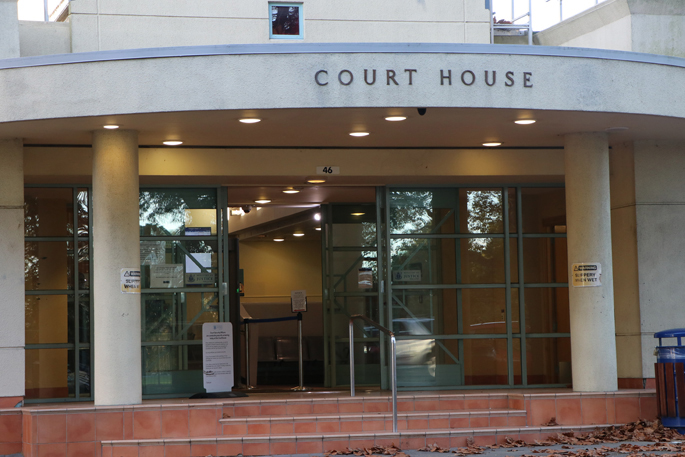A meth lab tucked away in dense bush, covered in camouflage netting, and containing a key piece of equipment so large it was removed by helicopter.
Around 14 kilograms of dried cannabis, wrapped in black bin bags, sealed in buckets, and hidden in the bush.
And more than $120,000 in cash tied up in bin bags, sealed in a suitcase and also concealed in undergrowth.
These are the allegations at the centre of a drugs trial under way at the Tauranga District Court where a man and woman jointly face six charges related to the production and manufacture of methamphetamine, and possession of cannabis for sale.
The court has heard how the accused couple lived on a semi-rural property near McLaren Falls, on the outskirts of Tauranga.
During a search of the property in 2019 police discovered the lab, which was over the other side of their boundary fence and down in steep, dense bush on the neighbouring property.
Police also found the suitcase of cash and buckets of cannabis concealed over the fence line.
Crown Prosecutor Ben Smith opened the case by stepping the jury through aspects of the evidence that, through predominantly expert and police witnesses, the Crown intends to prove linked the two defendants to the drug operation.
He said bootprints found in the mud around the lab appeared to match the tread pattern of boots found in the couple’s dwelling. A type of spoon, with a particular indentation on the handle, found in the lab also allegedly matched spoons found in the couple’s cutlery drawer.
It’s also alleged a frying pan found in the lab looked to be the same type as one found in their dishwasher. The one in the lab allegedly had a fingerprint on its base belonging to the male defendant.
The same type of canned drinks found in the dwelling and in a rubbish pit on the property, are alleged to be a visual match in terms of brand and size as ones found in the clan lab area - red Coca-Cola, black Canadian Club, and gold Cody’s.
The Crown alleges that bundled-up cash found inside their dwelling - around $17,000 - and some further cannabis, also belonged to the defendants.
Smith said the Crown would ask the jury to conclude that both defendants possessed items and substances involved in the manufacture of methamphetamine, and were either directly involved in or were a party to the operation of the meth lab.
He explained the different charges, pointing out that some of the equipment and substances listed in relation to the charges were everyday items one might find at “Bunnings”; others were substances identified as being specifically for the production of methamphetamine.
Smith said the Crown “cannot and doesn’t say” that it was only the defendants involved in the manufacture of methamphetamine, but it is alleged they were involved and provided assistance.
The defence cases for both the man and woman are that they had no knowledge of, or involvement in, the operation of the clandestine lab.
They did not know about the cannabis or cash found, either.
Lab was ‘well camouflaged and mothballed’
The accused man’s lawyer, David Niven, during his defence opening statement, asked the jury to pay attention to the “very broad time period” when the lab is alleged to have been operation.
The date range starts in early 2017, and Niven said by the time the search happened in mid-2019, the lab was not operating, and was “well camouflaged” and “mothballed”.
He said his client had no knowledge of it.
He said his client had legitimate income and skills, and hadn’t needed to deal or manufacture drugs to make money.
The woman’s lawyer, Philip Hamlin, gave an opening statement in which he too said his client had nothing to do with, and no knowledge of, the methamphetamine lab.
He pointed the finger at two men who he alleges had been given access to the property by the man and woman, with one of them living on the property in a separate dwelling, closer to where the meth lab and other material had been discovered.
He alleged the two men had drug-dealing affiliations and Hamlin asked the jury to consider the evidence they would hear that related to those individuals.
He repeated that his client knew nothing about the meth lab, cannabis, or money, and told the jury they should focus on who was visiting the property and who had access.
The first witness to give evidence in court was an officer involved in the search of the property, Detective Jonathan Baguley.
Smith took Baguley through a photo book produced as an exhibit and asked him to explain photos of buckets, sacks, rubbish bags and ropes that were allegedly found in the couple’s dwelling, shed and surrounding area.
He then asked the detective to comment on the visual resemblance of those items to similar items photographed during the search of the clandestine meth lab in the bush, and the cannabis and cash uncovered on the fenceline.
The trial continues.





0 comments
Leave a Comment
You must be logged in to make a comment.